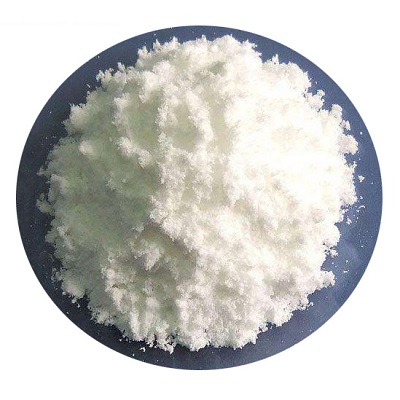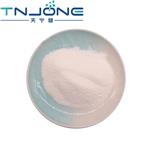Physical properties
Aluminum nitrate appears as a white or colorless crystalline solid (nonahydrate – rhombic crystal); deliquescent; refractive index 1.54; melts at 73.5°C; decomposes at 150°C; highly soluble in cold water (63.7% at 25°C), decomposes in hot water, soluble in polar organic solvents. It has an oxidizing effect on other substances. Though noncombustible, aluminum nitrate can be used to speed the burn of other combustible materials.

Aluminum nitrate is a salt composed of aluminum and nitric acid, belonging to a group of reactive chemicals - organic nitrate and nitrite compounds. The nitrate ion is polyatomic, meaning it is composed of two or more ions that are covalently bonded. This ion makes up the conjugate base of nitric acid.
Uses
The nonahydrate and other hydrated aluminum nitrates have many applications. These salts are used to produce alumina for preparation of insulating papers, in cathode tube heating elements, and on transformer core laminates. The hydrated salts are also used for extraction of actinide elements.
Preparation
The nonahydrate is prepared by treating aluminum, aluminum hydroxide, aluminum oxide, or aluminous mineral with nitric acid. The nitrate is crystallized from the solution.
Reactions
Since Al(NO3)3 or its salt hydrates dissociates to Al3+ and NO3 – ions in the aqueous solution, its reactions in solutions are those of Al3+ . It is partially hydrolyzed, producing H3O+ and thus accounting for the acidity of its solution in water. The products constitute a complex mixture of monoand polynuclear hydroxo species.
Aluminum nitrate is soluble in bases, forming aluminates, [Al(OH)4(H2O)2]–. It decomposes to Al2O3 when heated at elevated temperatures.
Description
Aluminum nitrate, is a white, crystalline material that is soluble in cold water. It is a powerful oxidizing agent that decomposes at approximately 300°F. Aluminum nitrate should not be stored near combustible materials. The four-digit UN identification number is 1438. The primary uses are in textiles, leather tanning, as an anticorrosion agent, and as an antiperspirant.
Chemical Properties
Aluminum nitrate is an odorless, white crystalline solid, often in liquid solution,Soluble in cold water, alcohol and acetone; decomposes in hot water.
Uses
Textiles (mordant), leather tanning, manufacture of incandescent filaments, catalyst in petroleum refining, nucleonics, anticorrosion agent, antiperspirant.
General Description
A white, crystalline solid. Noncombustible but can accelerate the burning of combustible materials. If large quantities are involved or the combustible material is finely divided, an explosion may result. Prolonged exposure to fire or heat may result in an explosion. Fires that involve Aluminum nitrate , produce oxides of nitrogen. Uses include, petroleum refining, dyeing, and leather tanning.
Air & Water Reactions
Deliquescent. Water soluble. Aqueous solutions are acidic.
Reactivity Profile
Aluminum nitrate is an oxidizing agent. Mixtures with alkyl esters may explode. Mixtures with phosphorus, tin(II) chloride or other reducing agents may react explosively [Bretherick 1979 p. 108].
Hazard
Powerful oxidizing agent. Do not store near combustible materials.
Health Hazard
Ingestion of large doses causes gastric irritation, nausea, vomiting, and purging. Contact with dust irritates eyes and skin.
Safety Profile
A poison. A severe eye and mdd skin irritant. A powerful oxidmer. When heated to decomposition it emits toxic NOx. See NITRATES and ALUMINUM COMPOUNDS. A nitrating agent.
AHE250
Potential Exposure
Aluminum nitrate is used in tanning leather; as an antiperspirant, as a corrosion inhibitor, in the extraction of uranium and as a nitrating agent
Shipping
UN1438 Aluminum nitrate, Hazard Class: 5.1; Labels: 5.1-Oxidizer.
Purification Methods
Crystallise the nitrate from dilute HNO3, and dry it by passing dry nitrogen through the crystals for several hours at 40o. After 2 recrystallisations of ACS grade, it had S, Na and Fe at 2.2, 0.01 and 0.02 ppm, respectively.
Incompatibilities
Aluminum nitrate is a strong oxidizer; avoid contact with flammable or combustible materials; and reducing agents, including chlorides. In solution this chemical is a strong acid; avoid contact with bases. Explosions may occur when aluminum nitrate is shocked or exposed to heat.
Waste Disposal
See Spill Handling above.





